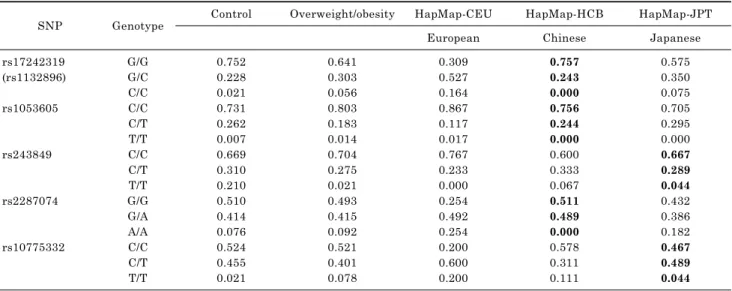125
ABBREVIATIONS: BMI, body mass index; CI, confidence interval;
HWE, Hardy-Weinberg equilibrium; LD, linkage disequilibrium; MMP2, Matrix metallopeptidase 2; OR, odds ratio; SNP, single nucleotide poly- morphism.
Corresponding to: Joo-Ho Chung, Kohwang Medical Research Insti- tute, Department of Pharmacology, School of Medicine, Kyung Hee University, 1, Hoegi-dong, Dongdaemun-gu, Seoul 130-701, Korea.
(Tel) 82-2-961-0281, (Fax) 82-2-968-0560, (E-mail) flyexcel@hanmail.
net,jhchung@khu.ac.kr
*These first authors contributed equally to this article.
Matrix Metallopeptidase 2 Gene Polymorphism is Associated with Obesity in Korean Population
Dong Hee Han
1*, Su Kang Kim
1*, Sungwook Kang
1, Bong-Keun Choe
1,2, Keon Sik Kim
3, and Joo-Ho Chung
11


